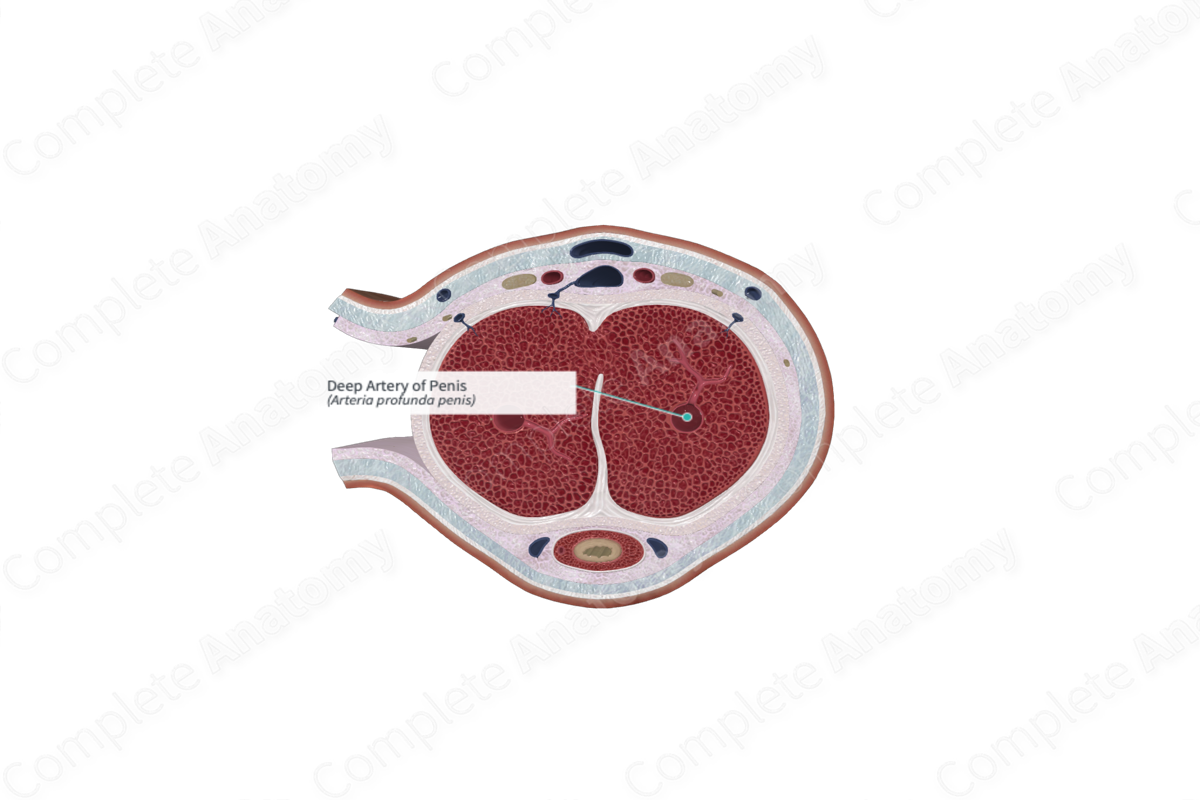
Quick Facts
Origin: Internal pudendal artery.
Course: Pierces the perineal membrane to enter the crus.
Branches: Helicine branches.
Supplied Structures: Corpora cavernosa of the penis.
Origin
The deep artery of the penis arises from the internal pudendal artery.
Course
The deep artery of the penis penetrates the perineal membrane to enter the corpora cavernosa in the crus of the penis. It continues towards the glans penis.
Branches
Within each corpus cavernosum, the deep artery of the penis gives off several helicine branches. They open directly into the vascular spaces supported and enclosed by the trabeculae (Standring, 2016).
Supplied Structures
The deep artery of the penis supplies the corpora cavernosa in the crus, body, and glans of the penis.
Clinical Correlates
Stimulation from sympathetic neurons maintains the smooth muscle in the tunica media of the helicine arteries in a tonic contractile state. The arteries remain coiled and the little blood that flows through them passes directly to the deep dorsal vein. Stimulation from parasympathetic neurons relaxes the tonic state and blood flows into the corpora cavernosa resulting in penile erection. One unique feature of these arteries is the presence of valves which prevent the flow of blood back through the corpora cavernosa.
The relaxation of the artery wall, due to parasympathetic innervation, is mediated by nitric oxide (NO). NO binds to guanylate cyclase increasing levels of cyclic guanosine monophosphate (cGMP) which then stimulates relaxation of the smooth muscle in the tunica media and so dilation of blood vessels and penile erection. Erection subsides when cGMP is broken down by cGMP specific phosphodiesterase type 5 (PDE5).
Drugs used to treat erectile dysfunction prevent PDE5 from breaking down cGMP and so the effects of NO are increased, and vasodilation occurs resulting in penile erection.
References
Standring, S. (2016) Gray's Anatomy: The Anatomical Basis of Clinical Practice. Gray's Anatomy Series 41 edn.: Elsevier Limited.
